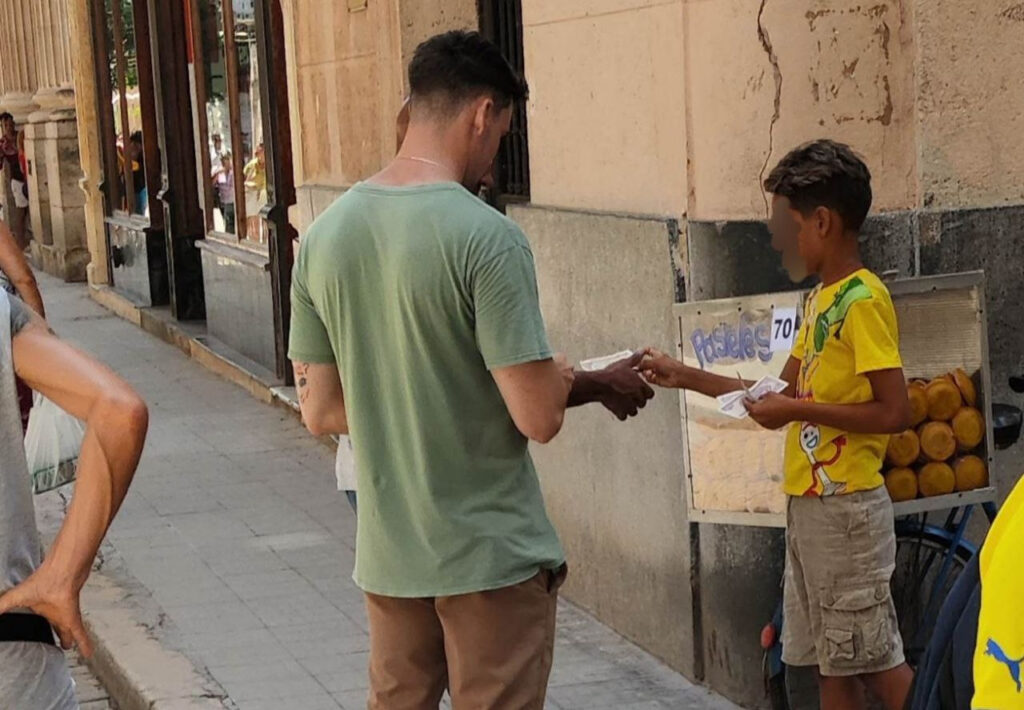“Give me something to buy a cone,” begs the barefoot, shirtless boy

14ymedio, Natalia Lopez Moya, Havana, 15 July 2024 — The boy with his face pressed to the glass appears to be about ten-years-old. Shirtless and barefoot, he looks attentively through the front door of Bueníssimo, a privately owned gourmet ice cream shop that opened late last year on La Rampa (23rd Street), in Havana’s Vedado district. The child’s eyes are focused on cups of chocolate, almond and vanilla ice cream that customers are savoring inside the air-conditioned shop. He briefly asks someone about to enter the store, “Can you spare something so I can buy a cone?”
As the island’s economic crisis worsens, the number of children asking for money, selling merchandise on the street or hanging around popular tourist attractions is growing. The sight of these waifs — most of them scrawny, barefoot and shabbily dressed, extending a hand as they beg for money or salivating beside a restaurant’s outdoor table — is increasingly common in Cuba. Not even the areas most heavily patrolled by police are immune to their presence.

A couple walking with their daughter approach Bueníssimo. As soon as he sees them turn the corner, the barefoot boy and his friend, who is wearing a pair of skates, start getting into place. The family is well-dressed and smells nice, the scent of expensive perfume trailing behind them. The woman is carrying a handbag, possibly a knock-off, with the logo of a famous brand. The mother and daughter enter the shop, not even looking to their sides. The man, however, lingers behind them. He puts his hand into his pocket, pulls out a 200-peso note and gives it to the little boy, whose face lights up.
A few seconds later, the shirtless boy enters and makes a purchase with the money he has been collecting all morning. He buys a strawberry ice cream cone with a bit of chocolate syrup on top. Each scoop costs 265 pesos. Meanwhile, the boy with the ska



